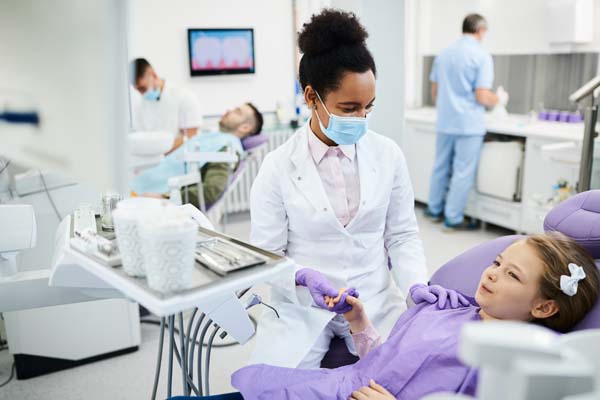What You Should Ask a Pediatric Orthodontist

If your child has misalignments or crooked teeth, you may be wondering what the options are. A pediatric orthodontist can answer all your questions and recommend the right treatment plan. You may have a lot of questions before diving into orthodontic treatment, and there are certain ones that you should ask at the consultation.
Frequently asked questions
A pediatric orthodontist has special training to work with children and ensure they get the most effective treatment. It is never too early to begin to research options when it comes to your child's teeth and smile.
What causes crooked teeth?
Genetics is the biggest cause of misaligned and crooked teeth. However, other causes include:
- Accidents or trauma
- Advanced dental decay
- Thumb sucking
- Early loss of baby teeth
What are the benefits of fixing crooked teeth?
One of the biggest benefits of fixing crooked teeth is to improve one's smile, which, in turn, increases confidence and self-esteem. However, there are other benefits besides aesthetic ones. Misaligned teeth are harder to brush and floss properly, which increases the chances of cavities and gum disease. Straight teeth are easier to clean, which often results in less decay.
If the teeth are crooked due to overcrowding, this can lead to numerous issues such as damaged teeth, bite issues, headaches, TMJ, and difficulties with wisdom teeth eruption. Crooked teeth can also result in chronic bad breath and overall health problems.
What orthodontic options are available?
The most common treatment that a pediatric orthodontist recommends is traditional metal braces. These consist of a metal bracket that is attached to the front of the teeth. They are connected with metal wires that are tightened at regular intervals to slowly move the teeth into the desired position. Children can personalize them with colored bands for a fun look.
Another option is ceramic braces. These work similarly to the metal braces, but the brackets are made with clear ceramic, so they are less noticeable.
For some patients, lingual braces may be an option. These are metal braces that attach to the back of the teeth.
For minor misalignments, clear aligners may be the right choice. These are almost invisible, and they are removed for eating and brushing.
When should my child begin orthodontic treatment?
The age to start treatment varies on a number of factors. It is recommended that a child have a consultation with a pediatric orthodontist around the age of 6 or 7, which will give you a better idea of when you should consider treatment.
How long will it take to complete treatment?
Treatment varies based on the severity of the misalignments, the type of orthodontic treatment, and each individual patient. The average completion time ranges from 12 to 36 months.
Conclusion
Fixing misalignments is advantageous in many ways. A pediatric orthodontist can recommend the right straightening option based on your child's dental problems, your child's age, and your budget.
If you think your child may need orthodontic treatment, our office can help. Schedule a consultation with the pediatric orthodontist today.
Check out what others are saying about our dental services on Yelp: Pediatric orthodontist in Tustin, CA.
Related Posts
Orthodontics can help address issues with your bite and provide a variety of benefits, like improved oral hygiene, improved speech, and an improved smile. Orthodontics works best when patients are around the ages of 9 to 14. At this point, the jaw and facial structures are still developing, but most of the permanent teeth should…
There are different types of appliances to choose from when it comes to orthodontics. These appliances typically work by pushing on the wearer’s teeth, gradually improving their alignment over time. Malocclusions, or bite problems, that can be treated with oral appliances include: Crooked teeth, spaces between teeth, overbites, underbites, and crossbites.Addressing poor teeth alignment provides…
Orthodontics can be used to treat a variety of teeth alignment issues, like a crossbite or crooked teeth. The alignment of a person’s teeth plays an important role when it comes to their oral and overall health. A person has a bad bite when some or all of their teeth do not come together as…
While wearing retainers after braces are a common recommendation for every patient, it is important to know that there are different types of retainers, their attributes, and how each will help decrease the chances of having to wear braces again. This article will cover the basics of retainers and answer some frequently asked questions.Before we…
